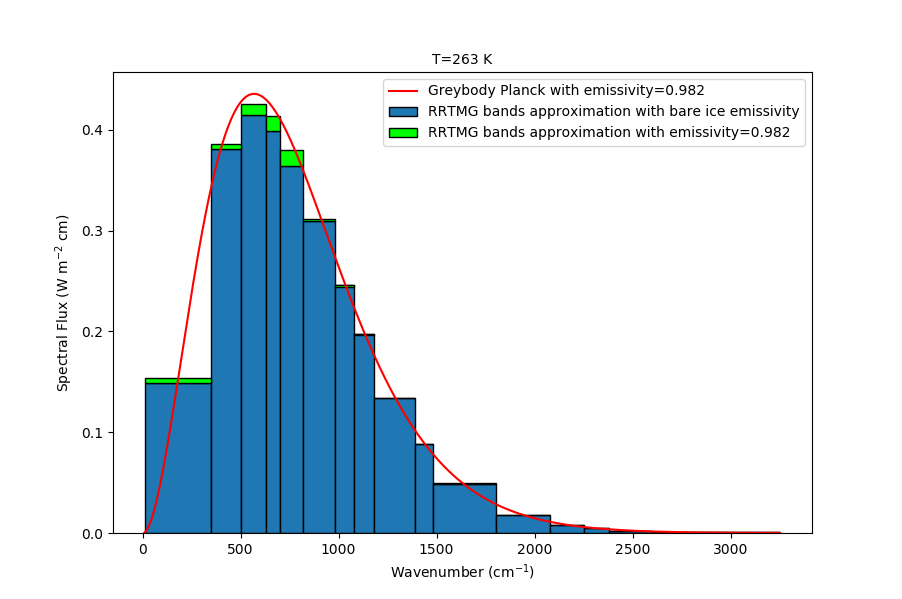Impacts of spectrally resolved emissivity on the surface energy balance and state of Arctic sea ice
Most simulations of longwave emission from sea ice assume a single greybody emissivity. It is increasingly recognized that sea-ice emissivity varies significantly across the electromagnetic spectrum, including in the infrared (IR) region of terrestrial radiation. Thus far, global coupled-model studies have focused on spectrally varying emissivity effects within the atmospheric model since it already uses multi-band longwave radiative transfer. These studies indicate that spectral correlations between surface emission and atmospheric transmission, especially in the far IR, trigger feedbacks yet to be fully represented in coupled models. This study changes a sea-ice model (CICE) to employ multi-band longwave physics with spectrally varying emissivity in order to re-examine the surface energy balance of sea ice. Physically realistic ice emissivity in the far IR can differ from the greybody emissivity currently used by up to 12%, leading to decreases on the order of 3 W m-2 in the far IR bands compared to using greybody emissivity. Preliminary results show that this spectrally dependent emissivity reduces the average longwave emission from the sea ice in the Arctic by ~0.2 W m-2 over areas that show no change in ice coverage, with reductions in monthly averages as large as ~0.7 W m-2 in summer. Arctic sea ice annual average area is similarly reduced ~5,580 km2 with a summer monthly decrease of up to ~ 26,000 km2. An experiment with atmospheric coupling would likely lead to larger changes due to feedbacks. This experiment is a first step toward fully coupled ESM experiments with spectrally varying emissivity in all surface model components.

